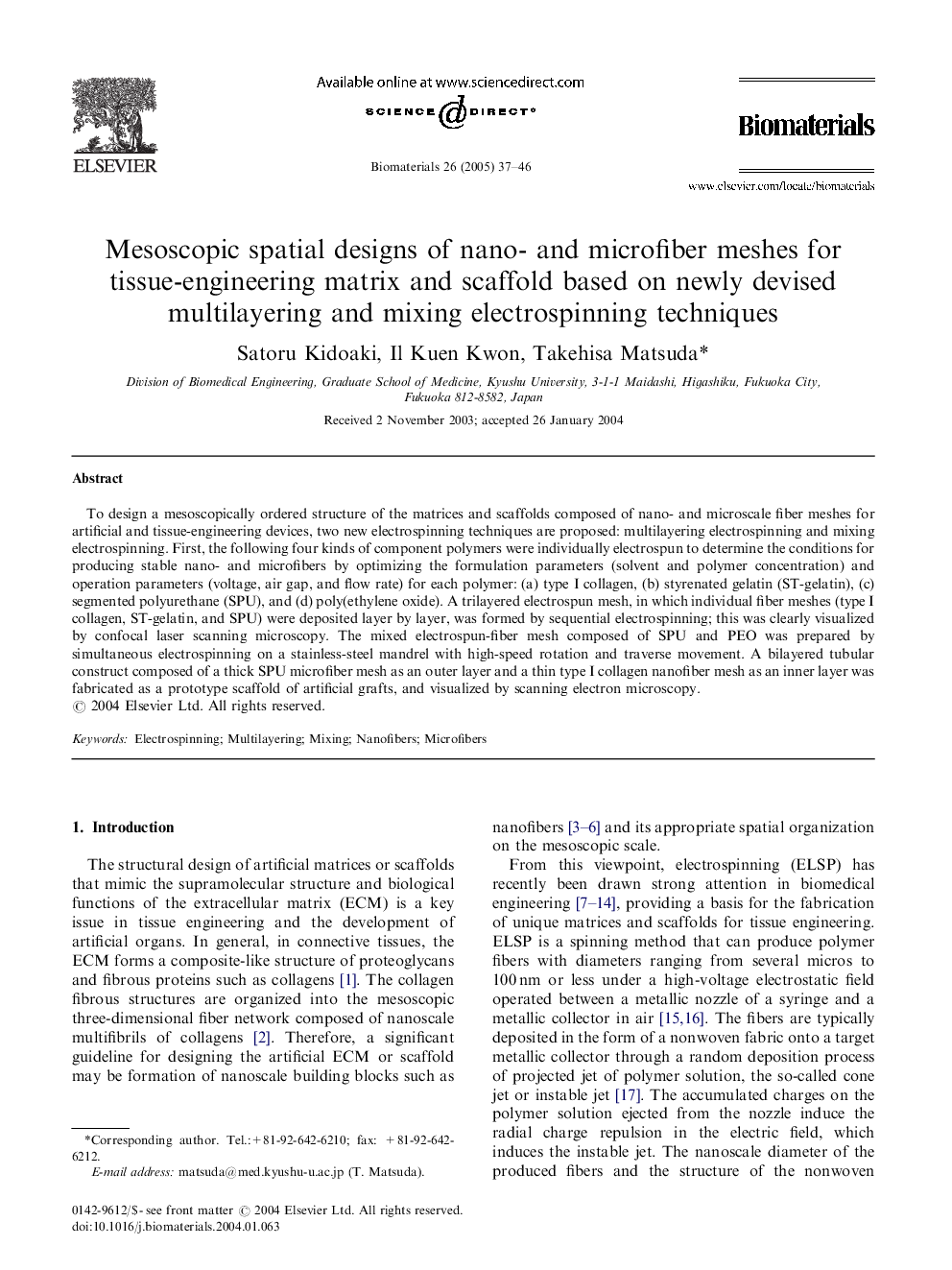| Article ID | Journal | Published Year | Pages | File Type |
|---|---|---|---|---|
| 10230312 | Biomaterials | 2005 | 10 Pages |
Abstract
To design a mesoscopically ordered structure of the matrices and scaffolds composed of nano- and microscale fiber meshes for artificial and tissue-engineering devices, two new electrospinning techniques are proposed: multilayering electrospinning and mixing electrospinning. First, the following four kinds of component polymers were individually electrospun to determine the conditions for producing stable nano- and microfibers by optimizing the formulation parameters (solvent and polymer concentration) and operation parameters (voltage, air gap, and flow rate) for each polymer: (a) type I collagen, (b) styrenated gelatin (ST-gelatin), (c) segmented polyurethane (SPU), and (d) poly(ethylene oxide). A trilayered electrospun mesh, in which individual fiber meshes (type I collagen, ST-gelatin, and SPU) were deposited layer by layer, was formed by sequential electrospinning; this was clearly visualized by confocal laser scanning microscopy. The mixed electrospun-fiber mesh composed of SPU and PEO was prepared by simultaneous electrospinning on a stainless-steel mandrel with high-speed rotation and traverse movement. A bilayered tubular construct composed of a thick SPU microfiber mesh as an outer layer and a thin type I collagen nanofiber mesh as an inner layer was fabricated as a prototype scaffold of artificial grafts, and visualized by scanning electron microscopy.
Related Topics
Physical Sciences and Engineering
Chemical Engineering
Bioengineering
Authors
Satoru Kidoaki, Il Kuen Kwon, Takehisa Matsuda,
